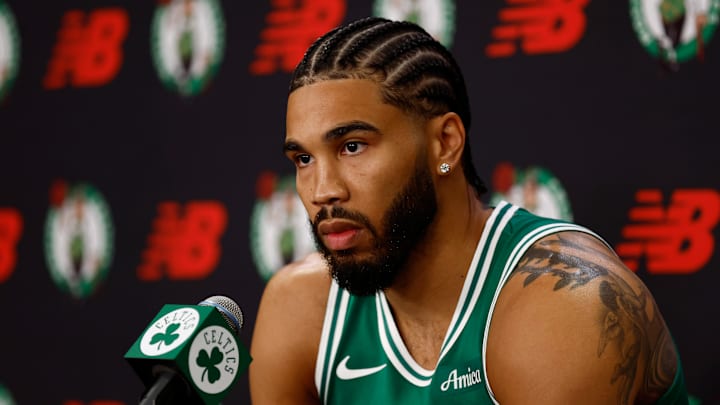Unless appearances are overwhelmingly deceiving, the Boston Celtics are preparing for a season without Jayson Tatum. Tatum's remarkable recovery process from the torn Achilles tendon he suffered in May has made headlines, but Boston's moves have indicated that patience is still key.
The Celtics haven't fielded a championship-caliber roster up to this point and it thus remains unlikely that they would bring Tatum back without the sincere belief that they can instantly contend.
There's something to be said for getting players reps once they've returned from an injury. As such, the contrarian view would be that bringing Tatum back in a low-minute, low-volume role at some point in 2025-26 could prove advantageous to his long-term recovery and return to form.
A torn Achilles tendon isn't the average injury, whether major or minor, however, as many careers have been derailed by that very ailment.
As such, the Celtics must be cautious as they look for the best paths forward to help Tatum continue his Hall of Fame career. That will ultimately include taking calculated risks, including potentially bringing him back if he's ready before or even during the 2026 NBA Playoffs.
With a roster that's still at least one significant trade away from being ready to contend, however, it appears as though the Celtics have already revealed their intention to keep Tatum sidelined.
Celtics' roster decisions imply Jayson Tatum won't return in 2025-26
Boston still has a championship-winning trio in 2024 Finals MVP Jaylen Brown, 2025 Sixth Man of the Year Payton Pritchard, and do-it-all guard Derrick White. It also has a compelling scoring guard with untapped potential in Anfernee Simons and a true sharpshooter in Sam Hauser.
Assuming the Celtics can add a high-level center and receive ideal contributions from the up-and-comers who will fill out the rotation, they could be in an ideal position to bring Tatum back.
In saying that, acquiring a high-level center would likely cost the Celtics at least one of the few proven players they have on their roster. That would simultaneously improve the quality at the 5-spot and deplete the limited resources at their disposal along the perimeter.
Perhaps Chris Boucher and Neemias Queta will reach a level they've yet to and render the need for center depth obsolete, but history at least reveals a reason for skepticism.
Tatum's return would improve the depth of the rotation, of course, but the Celtics don't appear to be swinging for the fences at the moment. The new governorship group is intent on cutting costs and that makes the process of going out and adding high-level talent unlikely to transpire.
If Boston ultimately opts against making a trade with the intent of improving the roster, then it'd be safe to assume that Tatum will not be returning in 2025-26.
It must be said that the Celtics are in relatively uncharted territory with Tatum considering how quickly he underwent surgery and how rapidly his rehabilitation appears to be progressing. It's simply more important to value the rest of his career over what may ultimately amount to a pipe dream of contending in 2025-26.
Rather than building a roster that's ideally equipped to incorporate Tatum and compete at a high level in 2025-26, Boston has seemingly prioritized long-term flexibility—and perhaps a long-term return.
